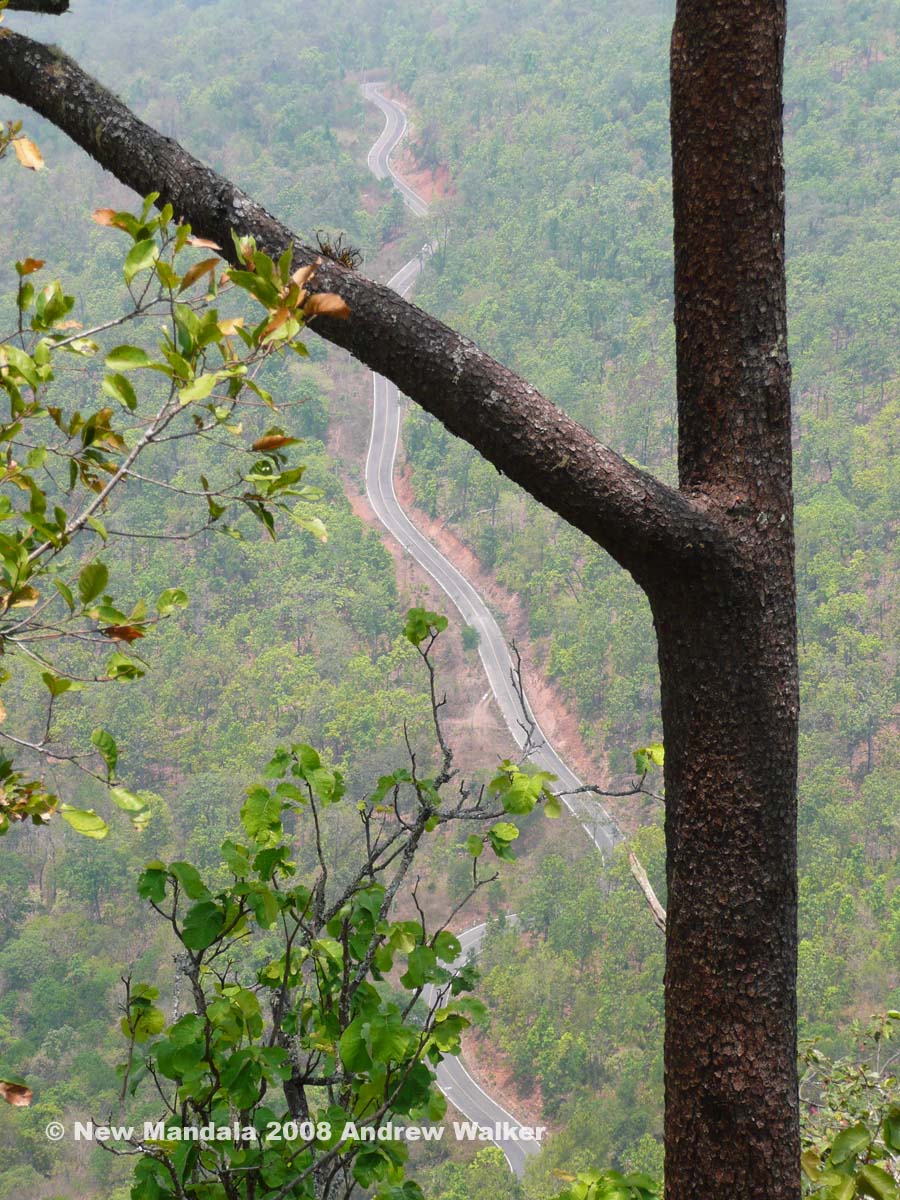A few weeks ago, as part of my songkran sortie in northern Thailand, I visited one of the more remote villages in Chiang Mai province to look at a local agricultural project. While I was there I heard that a new temple had been established nearby by some monks keen to spread the work about sufficiency economy and environmental protection. Of course, given my interest in sufficiency philosophy, I was keen to visit and jumped at my host’s invitation.
At first the drive to the temple was routine. A slightly meandering road, making its way up a small river valley with lovely views of paddy fields on the valley floor. But things changed when we arrived at the elaborately constructed temple gate. Turning off the road we commenced an improbably steep climb, winding up, up, up, up a narrow concrete road that had been cut into the side of the hill. After a few kilometres, and a climb of several hundred metres, we arrived at a car park. From there it was another few hundred metres up a rough set of concrete steps.
As I climbed the steps I imagined a modest, rustic little temple barely visible within the forest that dominated the landscape.
I was wrong.
As I reached the top of the steps I was shocked by the construction site that lay before me. An elaborate hill-top chedi was completely surrounded by a Buddhist architectural folly: a huge concrete pavilion, with an elaborately tiered roof supported by massive concrete pillars (painted brown to give an impression of timber).
According to one of the villagers who travelled with me the budget was a cool 50 million baht! (That’s equivalent to a Thaksin-style village credit fund for every village in the district. But, of course, this isn’t populist spending – its not popular and it doesn’t really help anybody!)
Apparently, one of the monks was from a well-connected family in Bangkok and had been able to use his “hi-so” network in business, the bureaucracy and the army to mobilise donations and technical assistance.
And this was done in the interests of sufficiency economy! The hill-top concrete wonder advertised itself on prominently displayed banners as a centre for training in sufficiency economy! A larger-than-life poster of the king swung gently in the breeze beside the chedi.
I’ve got nothing against the occasional act of conspicuous merit making. And I have no doubt that this extravagant construction has generated some employment and other commercial opportunity for local villagers (and, I suspect, for some lowly-paid Shan labourers who can be found on most construction sites in this part of the world).
But this sort of pseudo-religious folly – with its budgetary indulgence and completely unnecessary environmental impacts – should be a thing of the past. Thailand has more than enough hill-top places of worship. Those seeking to conspicuously display their merit and royal virtue may want to consider appropriate and sustainable ways of engaging with local livelihoods.
And urban commentators sometimes wonder why rural folk don’t take sufficiency economy seriously!
 Facebook
Facebook  Twitter
Twitter  Soundcloud
Soundcloud  Youtube
Youtube  Rss
Rss 